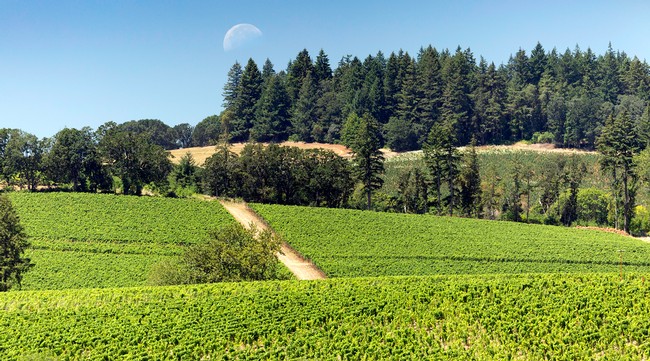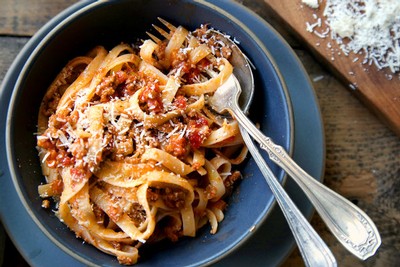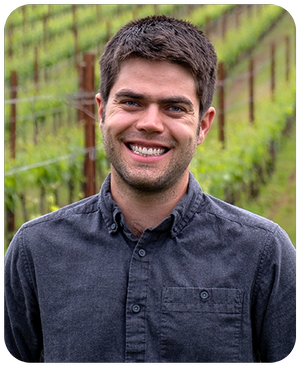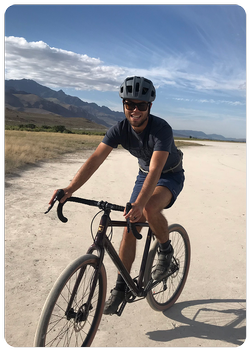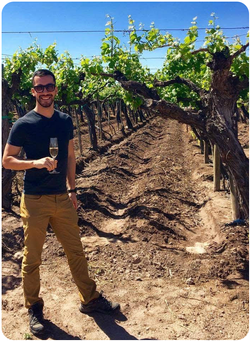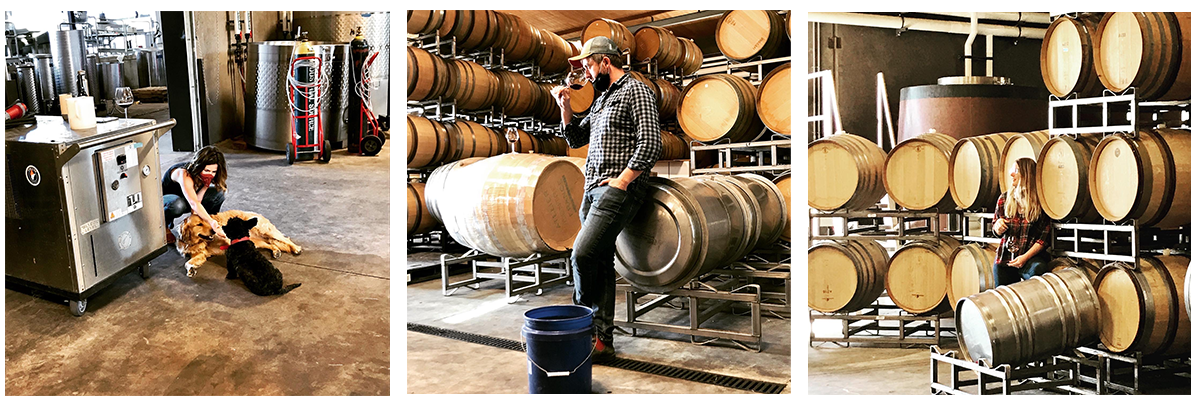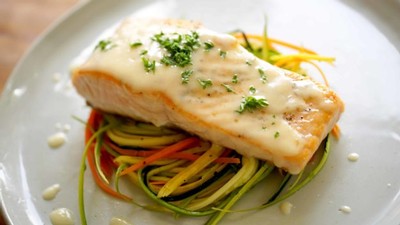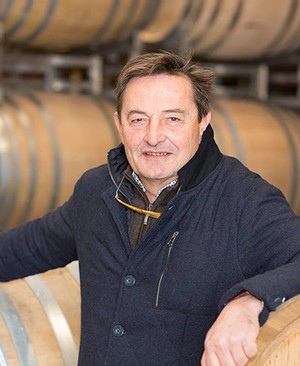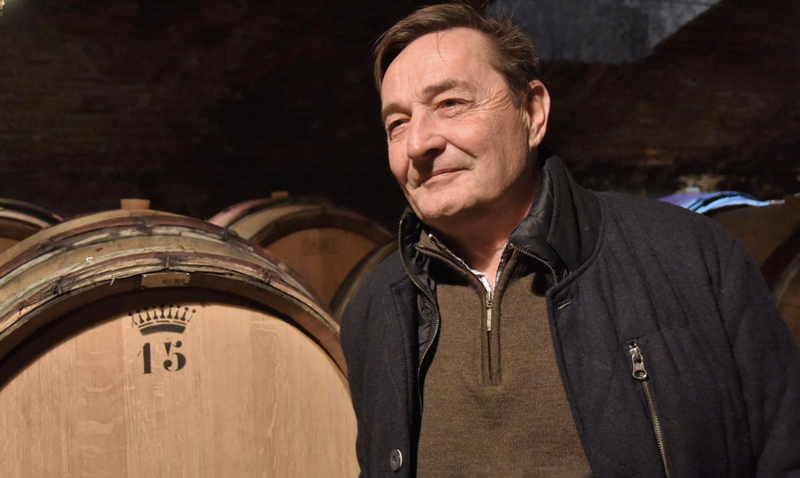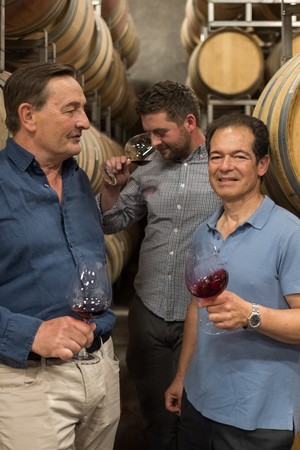The Library Release of the Inaugural 2016 Lingua Franca Estate Pinot Noir
Larry Stone, Thomas Savre, and Dominique Lafon first partnered after overseeing the now world-famous Seven Springs Vineyard. Having tasted wines sourced from Seven Springs since the early 90s, Larry felt certain that this small pocket within the Eola-Amity Hills was a special place, unlike no other in the Willamette Valley.
He felt so confident that when a plot of land was offered for sale next door, he didn’t hesitate. In fact, he auctioned off his entire personal wine collection as part of the down payment with plans to plant a vineyard.
When Dominique learned that Larry secured the property, and had already planted the 66 acres of Pinot Noir and Chardonnay, he recommended that they start producing wine together. Thomas agreed to join them and turn its sloping hills and ideal east-facing aspect into the great wine of Lingua Franca Estate Vineyard.
This year, we celebrate the five-year anniversary of the first bottling of our Estate Pinot Noir. Half a decade later, we continue to be captivated by the youth and quality of the first award-winning wine that was blended, labeled, and released as Lingua Franca Estate Pinot Noir.
Shop our Library Release by clicking here. Complimentary shipping applies to case purchases!
Marcella Hazan's Spaghetti Bolognese
Suggested Wine Pairing:
Our 2016 Lingua Franca Estate Pinot Noir — Larry recommends serving this wine at room temperature (66 to 70 degrees).
Ingredients (Serves 6):
- 1 tablespoon vegetable oil
- 3 tablespoons butter plus 1 tablespoon for tossing the pasta
- ½ cup chopped onion
- ⅔ cup chopped celery
- ⅔ cup chopped carrot
- ¾ pound ground beef chuck
- Salt
- Black pepper, fresh ground from the mill
- 1 cup whole milk
- Whole nutmeg
- 1 cup dry white wine
- 1½ cups canned imported Italian plum tomatoes, cut up, with their juice
- 1¼ to 1½ pounds pasta
- Freshly grated Parmigiano Reggiano cheese at the table
Preparation:
Put the oil, butter, and chopped onion in the pot, and turn the heat on to medium. Cook and stir the onion until it has become translucent, then add the chopped celery and carrot. Cook for about 2 minutes, stirring the vegetables to coat them well.
Add the ground beef, a large pinch of salt, and a few grindings of pepper. Crumble the meat with a fork, stir well, and cook until the beef has lost its raw, red color.
Add the milk and let it simmer gently, stirring frequently, until it has bubbled away completely. Add a tiny grating—about 1 teaspoon—of nutmeg, and stir.
Add the wine, let it simmer until it has evaporated, then add the tomatoes and stir thoroughly to coat all ingredients well. When the tomatoes begin to bubble, turn the heat down so that the sauce cooks at the laziest of simmers, with just an intermittent bubble breaking through to the surface. Cook, uncovered, for 3 hours or more, stirring from time to time. While the sauce is cooking, you are likely to find that it begins to dry out and the fat separates from the meat. To keep it from sticking, continue the cooking, adding /2 cup of water whenever necessary. At the end, however, no water at all must be left and the fat must separate from the sauce. Taste and correct for salt.
Toss with cooked drained pasta, adding the tablespoon of butter, and serve with freshly grated Parmesan on the side.
Ahead-of-time note: If you cannot watch the sauce for a 3- to 4-hour stretch, you can turn off the heat whenever you need to leave, and resume cooking later on, as long as you complete the sauce within the same day. Once done, you can refrigerate the sauce in a tightly sealed container for 3 days, or you can freeze it. Before tossing with pasta, reheat it, letting it simmer for 15 minutes and stirring it once or twice.
Variation of Ragù with Pork: Pork is an important part of Bologna's culture, its economy, and the cuisine, and many cooks add some pork to make their ragù tastier. Use 1 part ground pork, preferably from the neck or Boston butt, to 2 parts beef, and make the meat sauce exactly as described in the basic recipe above.
Photo Credit: Jim Wilson/The New York Times
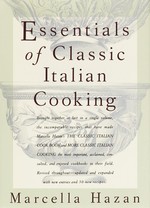
Recipe by Marcella Hazan. Copyright © 1992 by Marcella Hazan.
Meet the Team, Part 11
Meet
Chase Martin
Cellar Hand
Born and raised in western Colorado, Chase found his way to the Pacific Northwest during college. He graduated from Whitman College in the heart of Washington’s Walla Walla wine country, earning a degree in Chemistry and Geology with a concentration in groundwater modeling. Chase fell in love with the wine industry while at school, and decided to use his scientific background to work in vineyard data collection and analytics. After graduating, he worked in Napa and Sonoma counties for a company focused on helping winegrowers improve grape quality and adapt to climate change using plant-based data solutions. In 2019, he moved to Portland with the dream of trying his hand in wine production. That same Fall, Chase worked the harvest as an intern here at Lingua Franca before joining the team as our full time Cellar Hand.
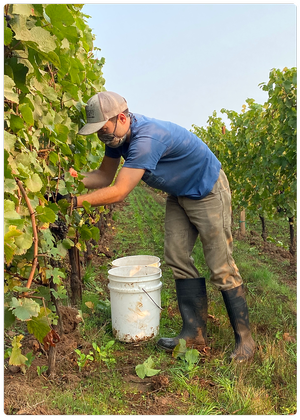
What’s a favorite memory from the 2019 harvest, your first harvest with Lingua Franca?
"I have a distinct memory from the 2019 harvest when our Assistant Winemaker, Kim, and a fellow harvest intern at the time, Samantha, and I spent an entire day topping up each barrel of individually fermenting chardonnay. The fermentations were bubbling away, so the cellar was warm and cozy and had the wonderful smell of barrel-fermented chardonnay. We had pop music playing over the speaker, and we laughed and danced as we worked. That was an inspiring moment where I realized just how much energy and love our team puts into each barrel of wine. I’m excited to work everyday with that kind of positive energy in the cellar!"
What do you enjoy doing during your spare time outside of work
"While not producing wine, drinking wine, reading about wine, or listening to wine-related podcasts on my commute, I most enjoy spending time in the outdoors with friends and family. Whether on foot, ski, bike, or boat, I love exploring the wild corners of Oregon and beyond with my wife, Molly. Most recently we’ve been spending a lot of time gravel biking in many of our local Oregon forests, and dreaming up a post-harvest rafting and fly-fishing adventure."
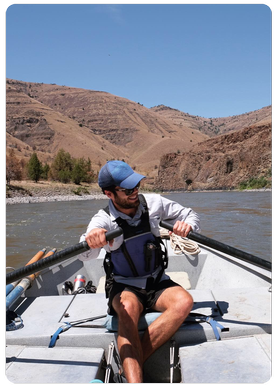
What are you enjoying drinking these days?
"As fall settles in, the cold temperatures remind me of time spent among the golden Aspen trees of southern Colorado and northern New Mexico. One of my favorite go-to drinks for fall is called a Chimayó, a cocktailfrom the Rancho de Chimayó restaurant nestled in the hills between Santa Fe and Taos. Fresh apple cider is the key ingredient, mixed with your favorite repasodo tequila, some lemon or lime, and finished with crème de cassis. It is my drink of choice for sitting on the deck in the crisp fall sun."
What’s your favorite go-to wine accessory at home?
"While I could highlight a favorite glass shape or corkscrew, to be honest, my favorite wine accessory wandered its way into my life two years ago at Christmas thanks to my older sister. My family loves cats, which my sister chose to celebrate by gifting me small, colorful, rubber cats that curl around the stem of a wineglass to help its user keep track of it. While perhaps not the classic wine accessory they are certainly unique and helpful during a dinner party. I can’t wait to use them again when we can someday gather in groups."
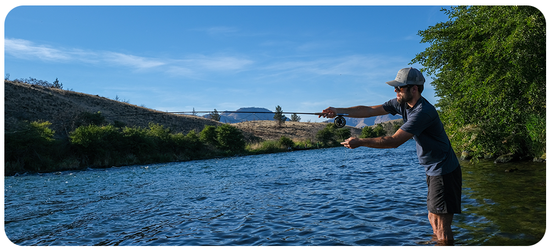
Meet the Team, Part 10
Meet
Michael Cheng
DTC & Hospitality Manager
Michael, originally from Minnesota, was first exposed to fine wine while in Europe as part of his studies of Spanish Language and Global Cultures. Indulging his lifelong interest in gastronomy, he quickly became a savvy and knowledgeable consumer. Uninspired by office work, Michael set his mind to pursue work in the wine industry, achieved the WSET Level 3, then relocated to Oregon. His studies deepened through his work in Wine Education with one of the Willamette Valley’s founding producers, including working the 2018 harvest, before joining the Lingua Franca team in early 2019.
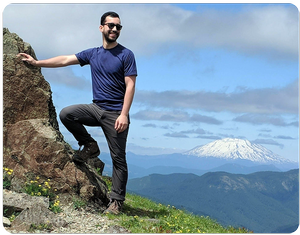
What do you enjoy doing during your spare time outside of work?
"I enjoy spending time in nature, particularly in the mountains. Travel, whenever possible, has always been important for me as a way to widen my perspective and explore the world. At the beginning of this year, I spent a few weeks in Colombia, and look forward to my next adventure when travel is once again possible."
What is one of your favorite memories of enjoying wine?
"I was in Milan in 2015 and went out for Aperitivo (happy hour) at Cantine Isola, an old wine shop and bar. I ordered a glass of some old Amarone, ate from the communal platters of antipasti, and chatted in very broken Italian with the various business people, who had just gotten off work and were meeting to enjoy a beautiful evening together. I was left feeling awestruck by the warmth and joy in the room, as family, friends, and even American strangers gathered to share food and drinks."
What are you drinking these days?
"Bubbly. In trying times, it’s important to find times of joy and celebration, and I find that popping corks and pouring sparkling wine always lifts my spirits. My go-to domestic producer is the reliable Roederer Estate Brut (half-bottles for guilt-free drinking), but Old World classics are hard to beat."
What’s your favorite go-to wine accessory at home?"Perhaps not an accessory, but the books The Oxford Companion to Wine and the World Atlas of Wine are indispensable tools to bring me greater understanding of whatever is in my glass."
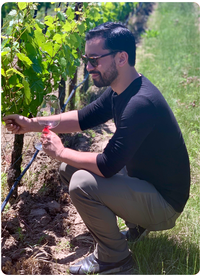
You’re studying for your WSET Diploma. Why are you interested in pursuing this certification?
"The WSET Diploma is a certification that provides an understanding of the global wine industry that is both broad and deep. The strong academic focus of this program appeals to my drive for deep understanding - making connections and knowing the “why” and “how” of things. I hope to continue my studies in pursuit of the Master of Wine qualification."
Click here to inquire about a tasting of our current releases with Michael.
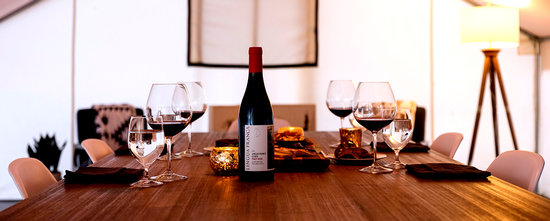
Fall Newsletter
Written by: Founder and CEO, Larry Stone
Dear Friends,
This year has been challenging for so many reasons within our country and around the world. Fortunately, people are rediscovering the importance of family and friends, they’re spending more time cooking and baking at home, and sharing meals and wine together. Nightly dinners at home with my wife Nancy along with a bottle of wine to contemplate have brought us closer together and made it so much easier to get through the pandemic.
Of course, Lingua Franca was forced to change overnight to meet the new conditions imposed by Covid-19, but we are grateful to have had so much support from our customers like you throughout the year, which enabled us to keep every member of our team fully employed and gave us hope for the future.
Harvest has just begun as I write this message. Instead of the international team of interns we’ve had in the past, we employed a small group of experienced interns from around the U.S. who are working in accordance with safe practices for Covid both on the crush pad and inside the winery. At least we are still able to have leisurely communal lunches together — suitably separated at a long table — with a couple of wines selected by Thomas and me that are served blind for educational purposes and enjoyment. This sense of community is one of my favorite aspects of harvest.
Then, as if the pandemic wasn’t enough, a couple weeks ago fires broke out in the Cascades to our east, with strong winds from the east spreading the flames and blowing smoke in our direction. Fortunately, none of the fires were close to us and the air quality improved once the usual Van Duzer winds resumed their inland course. To protect our vineyard team, we paused picking and resumed well after the air quality improved.
Though we have dealt with adversity this year, our cohesiveness, thoughtfulness and respect for one another have allowed us to prevail. Your support carries us onward for now, and we look with anticipation to the day when we’ll be able to share a glass of wine with you once again. Until then, we are thrilled to share three new releases with you and hope that your enjoyment of them, shared with close friends or family, will help get you through the rest of 2020.
All the best,

We're Proud to Announce New Releases from the 2018 Vintage:
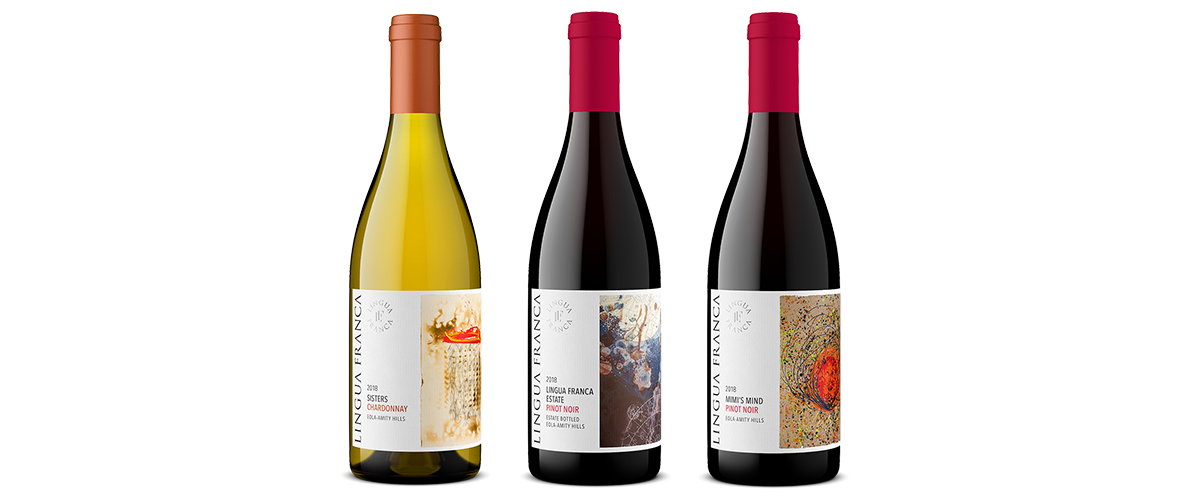
Meet the Team, Part 9
Meet
Amanda McNichols
Club Membership Manager
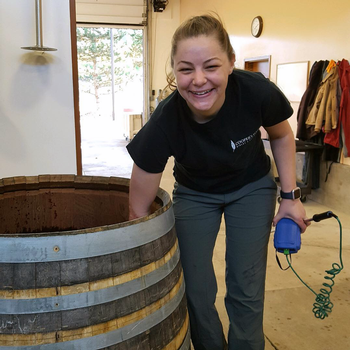
Amanda was born and raised in Tampa, Florida, where she was first exposed to the world of wine while working in a high-end restaurant to help pay for college. She was eager to learn more, so while pursuing her Bachelor’s Degree, she travelled to Florence, Italy to continue her wine studies at th e Apicius School of Hospitality. Upon graduation, she continued serving wine on the weekends at a local tasting room, while also working full-time for the Florida Legislature. She left the political world for good in 2018 after earning her Wine & Spirit Education Trust Level 3 certification. Amanda worked the 2018 harvest in the Willamette Valley at Trisaetum and has since decided to make Oregon her permanent home. She was drawn to Lingua Franca after falling in love with the Bunker Hill Chardonnay in a blind tasting.
What was your ‘epiphany’ wine and what do you remember about that moment?
"In late 2017, I attended classes for my Wine and Spirit Education certification in Tampa. Our instructor was a Riesling fanatic, so she included a b ottle of 2015 Weingut Clemens Busch Marienburg Falkenlay Riesling in our week of 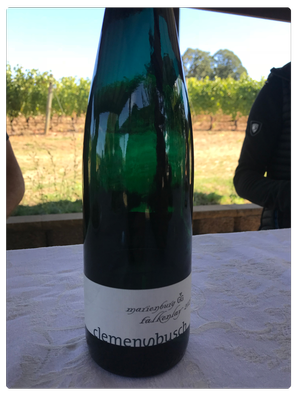 blindtastings. That first sip stopped my world. Less than a year later, in September of 2018, I had the distinct privilege of “calling” this wine from top to bottom during a blind tasting at Trisaetum. Weingut Clemens Busch is a small, biodynamic winery in the Mosel that I one day hope to visit. I also tasted a Lingua Franca Chardonnay for the first time in one of those daily blind tastings, and it was in that moment that I decided I’d do whatever it took to become part of the LF team!"
blindtastings. That first sip stopped my world. Less than a year later, in September of 2018, I had the distinct privilege of “calling” this wine from top to bottom during a blind tasting at Trisaetum. Weingut Clemens Busch is a small, biodynamic winery in the Mosel that I one day hope to visit. I also tasted a Lingua Franca Chardonnay for the first time in one of those daily blind tastings, and it was in that moment that I decided I’d do whatever it took to become part of the LF team!"
What are you enjoying drinking these days?
"Cava! Sparkling wines have always been a favorite while relaxing at home. Also, I often enjoy simple apertif cocktails like Cocchi Americano and soda with a twist of orange."
What do you enjoy doing during your spare time outside of work?
"If I’m not at work you'll often find me in one of two places: on our 20-acre 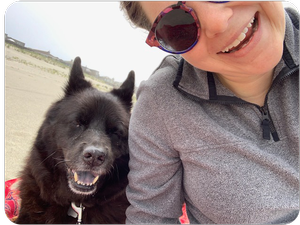 farm caring for our many animals, or out hiking with my pup, Ziggie. I like to search for waterfalls out on the Oregon Coast."
farm caring for our many animals, or out hiking with my pup, Ziggie. I like to search for waterfalls out on the Oregon Coast."
What are you looking forward to taking on now that you’ve stepped into the Club Membership Manager role?
"The most exciting part about my new role as Club Membership Manager is our members! As I get to know them, I'm reminded of the unique connection we all have — a passion for the exceptional wines our winemaking team works tirelessly on. Getting to know our members fuels me to find ways to constantly innovate and elevate our wine club experience. My goal is to translate the labor and love for the extraordinary piece of land we’ve found in more ways than the wine alone. Every day that I walk onto our estate I feel inspired; there is an energy here that I am eager to share, especially with those that haven't yet seen it first hand."
Brandon's Salmon with Lemon Beurre Blanc Recipe
Ingredients (Serves 4):
-
(4) 4 oz salmon filets
-
2 tbls canola oil
-
3/4 cups dry white wine such as Avni Chardonnay
-
1/2 cup heavy cream
-
1 shallot, finely diced
-
8 oz (two sticks) unsalted butter divided into 1/2 inch cubes
-
2 tbls fresh squeezed lemon juice
-
Zest of one lemon
-
Kosher salt (to season salmon and to taste for the Beurre Blanc)
Preparation:
For the Beurre Blanc:
-
In a medium sauce pan, combine the shallots and wine. Bring to a boil and reduce heat to medium. Reduce by 1/3.
-
Add the cream and reduce by 1/3 again.
-
Over low heat, add the butter slowly, one cube at a time and constantly stir to incorporate. Do not let the sauce boil - it will separate.
-
After all of the butter has been incorporated into the sauce, add the lemon juice and season with salt to taste.
For the Salmon:
-
Preheat oven to 375F, season salmon with salt to preference.
-
In a large, oven-safe skillet, heat on high and add the canola oil. Once the oil is hot, turn the heat down to medium-high, add the salmon (skin side down), and sauté untouched for 2 minutes.
-
Carefully flip the salmon over and move the pan to the oven and roast for 8 to 10 minutes (for med-rare to medium).
-
Plate the salmon skin side down on the plate, add the lemon zest to the Beurre Blanc, quickly incorporate and sauce the salmon.
Photo Credit: Entertaining with Beth
Meet the Team, Part 8
Meet
Dominique Lafon
Consulting Winemaker
Best known as the namesake, director, and winemaker of one of the great estates of Meursault, Dominique is a descendant of Jules Lafon, who created the revered wine festival, La Paulée. After taking over his family's domaine in the 1980s, Dominique revitalized its red and white winemaking approach. In 2015, after a long friendship with Larry, Dominique joined Lingua Franca as Consulting Winemaker and works with the team to oversee winemaking and vineyard operations.
Can you tell us about your first memory of enjoying wine? What was your first job in the wine industry?
"As far as enjoying wine, the situation is pretty different when you are born in Burgundy... I have always seen wine on a table and had access to it. Wine was always a normal part of life and at that time I didn't see it as anything special. Later in 1981, I had my first job as a cellar intern in California and became close friends with wine industry veterans Mel Knox and Jim Olsen, both long-time wine collectors and big fans of Burgundy. This made me realize how special Burgundy was and prompted me to take over my family estate. This also happens to be around the same time that I first visited Oregon!"
You’ve said that your interest in wine starts with agriculture. What are the main differences you’ve seen between the vineyards in the Willamette Valley and those in Burgundy?
"Burgundy and the Willamette Valley share the same grape varietals and the same cool climate, however the weather patterns are often quite different: in Oregon, after bloom, it's sunny almost every day, but in Burgundy, it's not uncommon to see a fair amount of rain or overcast weather during the ripening season. Oregon also sees much less disease pressure and the vines are easier to manage because they're planted farther apart leaving more space for tractors, plowing and hand work. In Burgundy, we are required to plant 10,000 vines per hectare by law making the vineyard feel more condensed. The Eola-Amity Hills AVA where the LF Estate Vineyard is located gets those amazing breezes from the Pacific ocean all summer, which enhances the flavor profile of the wines."
What have you learned from your time as a consulting winemaker in Oregon?
"I have learned that you can't apply all your tricks that work well in Burgundy. The goal is to achieve great Oregon wines, not a pale copy of Burgundy. Overtime I have learned more and more about the sense of place, with all its potential. Honestly, it feeds my knowledge, and I feel stronger in Burgundy now that I have faced new places, new questions."
What do you like to do outside of work?
"I am an outdoorsy person. I like to walk, bike, ride horses, swim, sail and ski. I like the ocean as much as the mountains! I also enjoy good food whether at home or in restaurant and I listen to a lot of music, from rock and roll (The Rolling Stones, Bob Dylan, Neil Young) to quite a bit of jazz (Miles Davis and Chet Baker) to traditional French music (Georges Brassens, Léo Ferré, Alain Bashung). I wish I had time to play an instrument like the piano or guitar. I read a lot too; I've been living without a TV at home for more than 20 years."
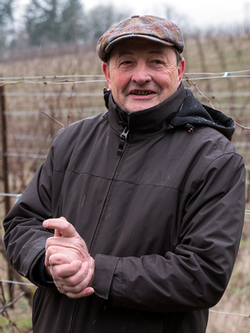
What are you drinking at home these days?
"If I could get enough, I would drink the 2016 Bunker Hill Chardonnay, one of my favorite Chardonnays we've produced. Because many of the Lingua Franca Chardonnays are made in limited quantities and there is often such a high demand, I often find myself drinking White Burgundies (it happens I have quite a few bottles!). In the spring and summer, I switch to drinking Riesling, German or Alsatian, and sometimes Chenin Blanc. But I cannot live without Pinot Noir, which represents about 80% of my red wine consumption!"
Tune in Saturday, July 18th at 11:00 am (PST) to hear Dominique participate in a webinar moderated by New York Times Wine Critic, Eric Asimov. Click here for more details.
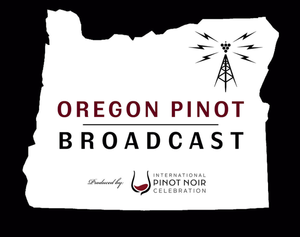
Sam's Pan Roasted Pork Tenderloin with Marsala Mushroom Risotto Recipe
Ingredients (Serves 4):
-
1 Whole Pork Tenderloin (about 2-2 ½ lbs)
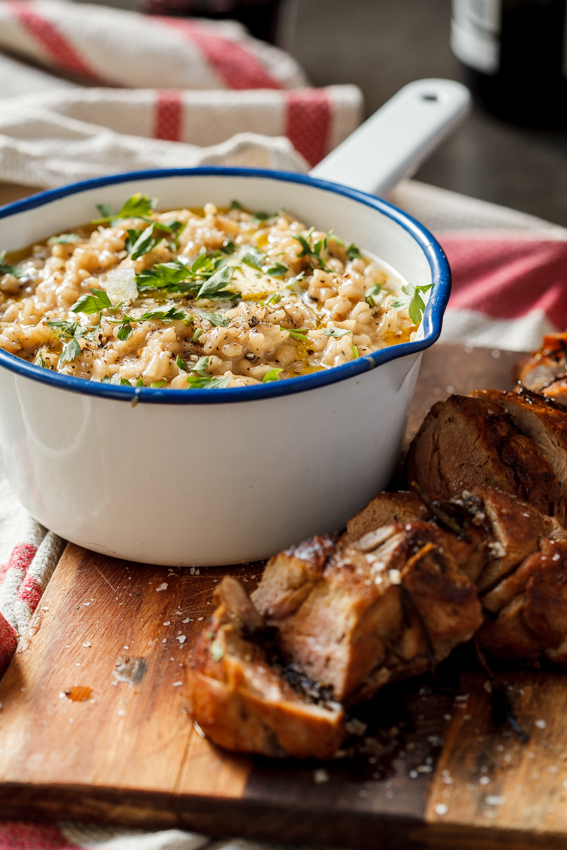
-
3 Tablespoons Canola Oil
-
1 Cup Arborio or Carnaroli Rice
-
1 Cup Dry White Wine (Avni Chardonnay works great!)
-
4 Cups Chicken Stock
-
1 Cup Sweet Marsala Wine
-
10 ounces of Baby Portabella, Shitake, or Crimini Mushrooms brushed, Stemmed and Sliced
-
3 Tablespoons Olive Oil
-
1 ½ Teaspoons Fresh Thyme, Finely Chopped
-
1 Tablespoon Chives, Finely Chopped
-
2 Cloves Garlic, Finely Chopped
-
1 Shallot, Finely Chopped
-
1 Cup Freshly Grated Parmigiano-Reggiano Cheese
-
2 Teaspoons Kosher Salt
-
1 ½ Teaspoons Fresh Ground Black Pepper
-
5 Tablespoons Cold Unsalted Butter, Diced Into Cubes
-
Additional Salt and Pepper to taste
Preparation:
-
Pre-heat oven to 375℉
-
Mix the white wine and chicken stock in a medium sauce pan and warm over medium heat to a slight simmer.
-
Remove the silver skin from the pork tenderloin and pat it dry with a paper towel. Mix the salt and pepper in a small bowl and use it to coat the tork tenderloin as evenly as possible on all sides.
-
For the risotto: put the olive oil in a large sauce pan and turn the burner to medium heat. When the oil begins to shimmer, add the shallot and sauté for 2 minutes or until soft and translucent. Do not let the edges burn or turn brown. Add the rice to the pan and mix with the shallot and oil to coat. Sauté for 3 - 4 minutes stirring gently but constantly to avoid burning until the rice starts to produce a slightly nutty aroma. Add enough of the warm chicken stock and wine mixture to just cover the rice and stir to mix. Set the heat level to medium low and let the rice simmer.
-
Check the rice every 5 minutes or so by running a spatula through the center of the pan. When the rice divides and doesn't immediately fill the space made by the spatula, add another dose of the stock mixture to just cover the rice and give it a few stirs to incorporate. Repeat this step until the stock is used up and the rice is tender.
-
For the pan roasted pork: While the rice is cooking, put 2 tablespoons of canola oil in a cast iron skillet or heavy steel sauté pan and set the burner to high. When it the oil begins to shimmer, carefully add the pork tenderloin to the pan — it may smoke a bit so make sure your vent hood is running. Let the meat sear for 2-3 minutes, until it releases from the pan without tearing its surface, and rotate a quarter turn. Repeat this two more times to brown the meat on all four sides. When you turn the meat the third time (on the fourth side) carefully put a probe thermometer through the end of the tenderloin as level as you can to the middle of the meat and put the pan in the oven to roast. Remove the tenderloin from the oven when the thermometer reads 145℉ and cover lightly with aluminum foil for 5-10 minutes to let the meat rest.
-
For the Marsala mushrooms: while the meat is roasting in the oven, combine 2 tablespoons of butter and the remaining tablespoon of olive oil in a large non-stick skillet and heat over medium-high until the butter is melted and foamy. Add the sliced mushrooms to the pan and sauté for about 5 minutes until the mushrooms start to brown and shrink slightly. Turn the heat down to medium and add 1 teaspoon of chives, thyme and garlic along with the remaining tablespoon of butter to the skillet and stir to combine with the mushrooms. Continue to stir the mushrooms every few minutes. When the mushrooms are uniformly brown and most of the oil has been soaked up, remove from the heat and add the Marsala wine. Stir to deglaze the pan and coat the mushrooms. Return to medium-low heat and stir gently until the marsala is mostly absorbed into the mushrooms.
-
If the last dose of broth has been incorporated into the risotto, add the mushroom mixture directly to the risotto and stir to combine. If not, move the mushroom mixture to a bowl and cover to hold temporarily and then add it to the risotto when the last dose of stock has been absorbed.
-
Remove the risotto from the heat and add the Parmigiano-Reggiano to the risotto and stir to incorporate. Then add the cold butter, one cube at a time and stir it into the risotto until it is melted and mixed in. Add salt and pepper to taste.
-
Slice the tenderloin into 1 1/2 to 2 inch portions. Put a large serving spoon or two full of risotto onto a plate and place a portion (or two) of tenderloin on top. Turn a few grinds of black pepper over each serving and garnish with the remaining chives.
